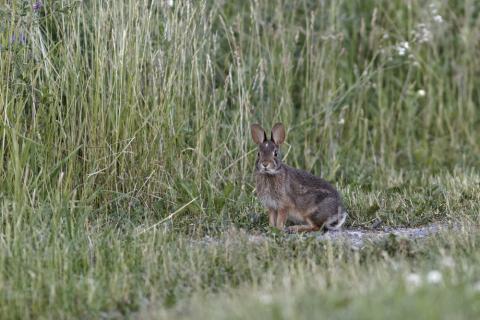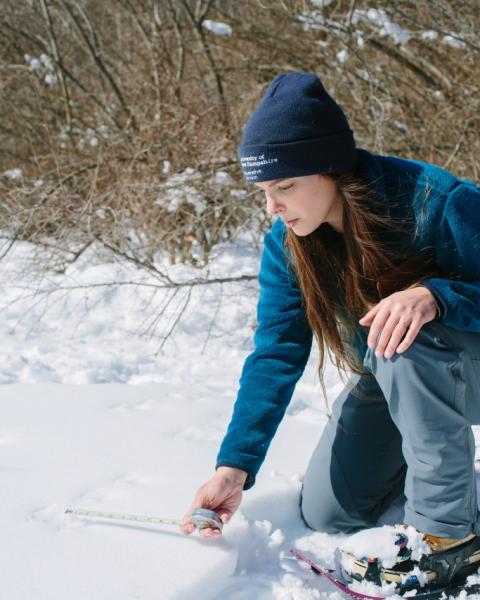Hop Into Spring With NH Rabbit Reports

This spring, forget about binging on chocolate Easter bunnies and searching for eggs. Instead, set your sights on the real rabbits living around you. It’s nesting season for rabbits in New Hampshire, and that means it’s time to submit your rabbit sightings and photos to NH Rabbit Reports.
NH Rabbit Reports is a citizen science project sponsored by UNH Cooperative Extension and N.H. Fish and Game, with support from the Wildlife Heritage Foundation of New Hampshire. The project is collecting data, photos and sighting information to help researchers better understand the distribution and potential abundance of rabbit species in the Granite State.
It’s no coincidence that rabbits are most abundant in the spring. The snow is melting, plants are greening, and wild rabbits are nesting. That means you’re more likely to see rabbits in your backyard, around your neighborhood or during an outdoor adventure.
You can hop into spring by using your smartphone or computer to submit rabbit sightings to NH Rabbit Reports. Species identification skills aren’t required. All you need to record is the date, time and location of the sighting and a description of where you saw the rabbit — and, if you’re fast enough, a photo of the bouncing bunny.
A Sign of Spring
Rabbits are one of spring’s quintessential symbols. But they’re also an important part of the Granite State’s wildlife population. New Hampshire is home to two species of rabbits: the eastern cottontail and the New England cottontail, as well as one species of hare, the snowshoe hare.
One of the major differences between New England cottontails and eastern cottontails is their habitat requirements. Eastern cottontails (which you can see at the top of this post) are able to survive in human-dominated fragmented habitats, including open fields, forest edges, small thickets and even golf courses and suburban lawns. New England cottontails, however, rely on dense thickets for their habitat needs and rarely venture far from protective cover. N.H. Fish and Game coordinates a comprehensive effort to survey for the presence of the state-endangered New England cottontail, but less is known about where and in what numbers eastern cottontails are found in the state. Recording rabbit sightings can provide crucial information on the distribution of New Hampshire’s rabbit species.
Make spring the season you help out New Hampshire rabbits and submit your rabbit sighting today.
